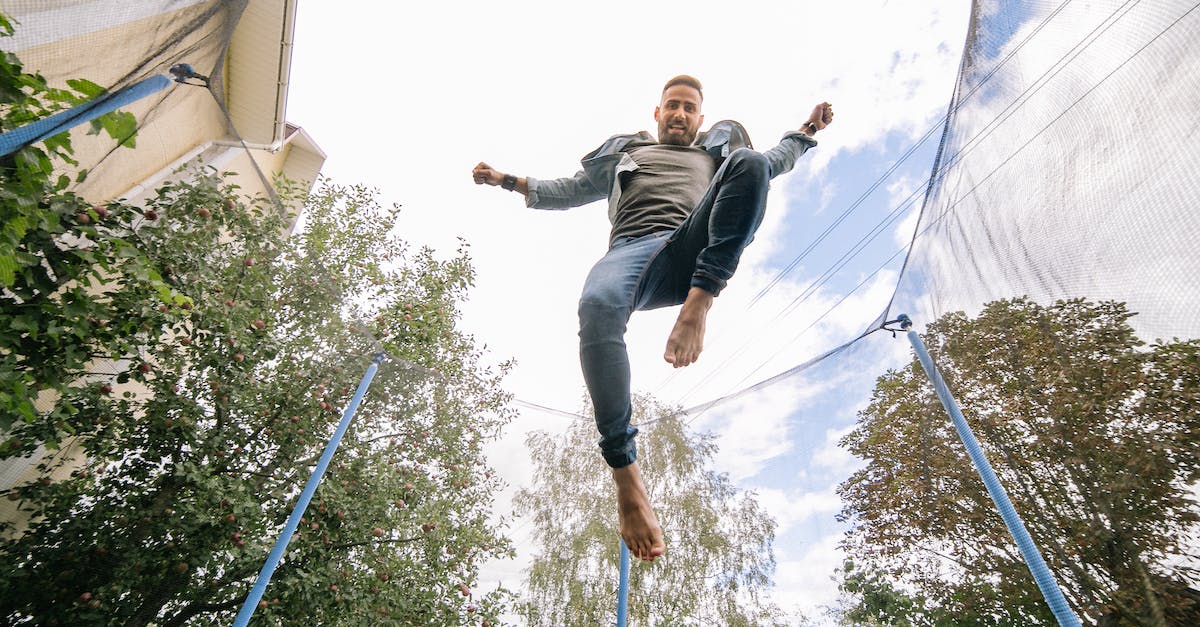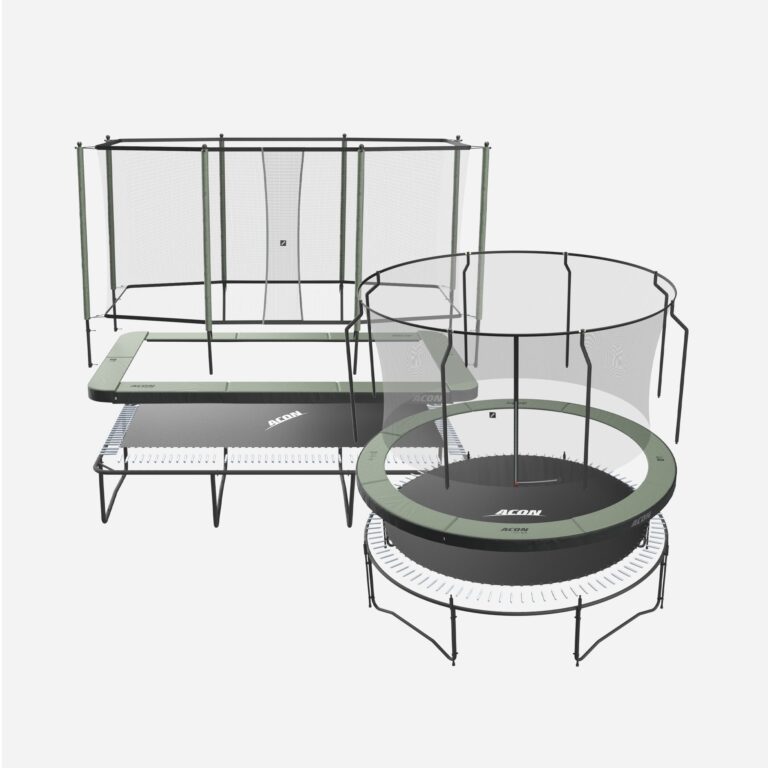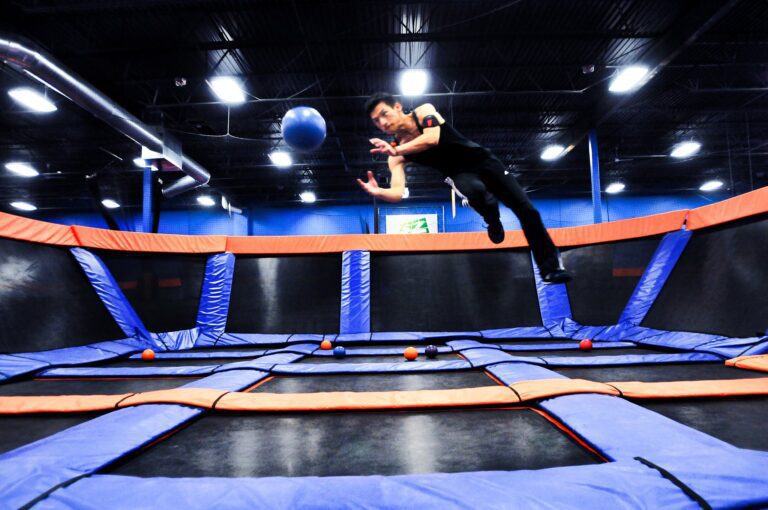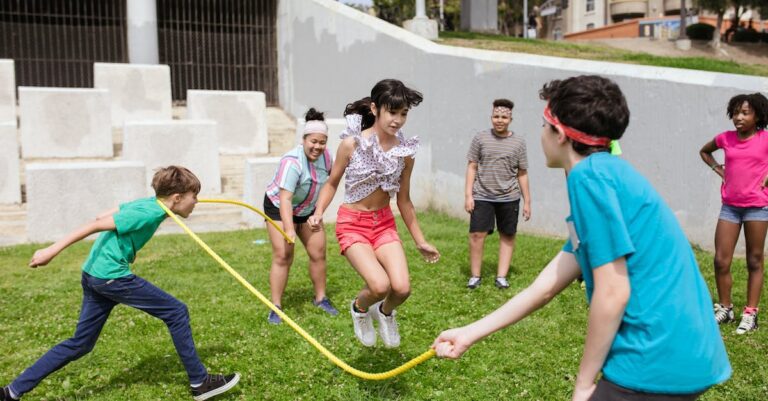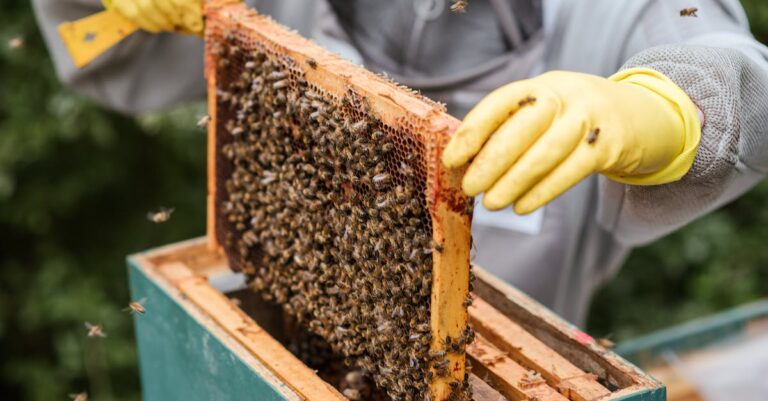Mastering Trampoline Techniques: A Step-by-Step Tutorial
Introduction
What are trampolines?
Trampolines are a popular recreational equipment that provide hours of fun and entertainment for people of all ages. They consist of a strong fabric stretched over a steel frame with coiled springs, which allows users to bounce and jump high into the air. Trampolines are not only a source of enjoyment, but they also offer numerous health benefits. Regular trampoline use can improve cardiovascular fitness, coordination, and balance. Additionally, it helps in strengthening muscles and bones, promoting weight loss, and reducing stress. Whether you are a beginner or an experienced trampolinist, mastering trampoline techniques is essential to ensure safety and maximize the enjoyment of this thrilling activity.
Benefits of trampoline exercises
Trampoline exercises offer a wide range of benefits for individuals of all ages and fitness levels. One of the key advantages is that they provide a low-impact workout, making them ideal for people with joint or bone issues. Additionally, trampoline exercises can improve cardiovascular health, coordination, and balance. They also help in toning muscles, especially the legs, core, and glutes. Furthermore, trampoline workouts are a fun and enjoyable way to burn calories and relieve stress. Whether you are a beginner or an experienced fitness enthusiast, incorporating trampoline exercises into your routine can greatly enhance your overall physical well-being.
Overview of the tutorial
In this tutorial, we will provide a comprehensive overview of trampoline techniques and how to master them. Trampolining is a popular recreational activity that involves jumping and performing various acrobatic moves on a trampoline. Whether you’re a beginner or an experienced trampoliner, this tutorial will guide you through the step-by-step process of mastering trampoline techniques. We will cover the basic principles of trampolining, safety precautions, and a variety of advanced techniques to enhance your skills. By the end of this tutorial, you will have the knowledge and confidence to execute impressive trampoline maneuvers and take your trampolining abilities to new heights.
Choosing the Right Trampoline
Types of trampolines
Trampolines come in various types, each offering a unique experience for users. One of the most common types is the round trampoline, which is known for its stability and versatility. Another popular option is the rectangular trampoline, which is favored by athletes and gymnasts due to its superior bounce. Additionally, there are also oval trampolines that provide a good balance between stability and space. Finally, mini trampolines, also known as rebounders, are compact and portable, making them ideal for indoor use or for individuals looking for a low-impact workout. With such a wide range of trampoline types available, enthusiasts can choose the one that best suits their needs and preferences.
Size and weight capacity considerations
When it comes to trampolines, size and weight capacity are important factors to consider. The size of the trampoline will determine how much space you have to jump and perform tricks. If you have a smaller backyard, you may need to opt for a smaller trampoline. On the other hand, if you have a larger space, you can go for a bigger trampoline that allows for more freedom of movement. Additionally, the weight capacity of the trampoline is crucial for ensuring safety. It is important to choose a trampoline that can support the weight of the intended users. Overloading a trampoline can lead to accidents and injuries. Therefore, it is essential to carefully consider the size and weight capacity when selecting a trampoline for mastering trampoline techniques.
Safety features to look for
When it comes to mastering trampoline techniques, safety should always be a top priority. There are several key safety features to look for when choosing a trampoline. First and foremost, a sturdy frame is essential to ensure stability and prevent accidents. Look for trampolines with a thick, durable frame made from high-quality materials. Additionally, a safety enclosure is crucial to keep jumpers safe and prevent falls off the trampoline. Make sure the safety enclosure is securely attached and has a strong, reliable netting. Other important safety features to consider include padded springs and a non-slip jumping surface. By choosing a trampoline with these safety features, you can enjoy mastering trampoline techniques with peace of mind.
Setting Up the Trampoline
Finding the perfect location
Finding the perfect location is crucial when it comes to mastering trampoline techniques. The right location provides a safe and suitable environment for practicing various moves and tricks. Ideally, the perfect location should have a flat and level surface, free from any obstructions or hazards. It should also have enough space to accommodate the trampoline and allow for proper jumping and landing. Additionally, the location should be away from any overhead obstacles such as tree branches or power lines. By finding the perfect location, trampoline enthusiasts can enhance their skills and enjoy a fulfilling and safe trampolining experience.
Assembling the trampoline
Assembling the trampoline is an essential step in mastering trampoline techniques. To begin, carefully lay out all the trampoline parts and ensure that you have all the necessary tools. Follow the manufacturer’s instructions to connect the frame pieces and attach the springs. Make sure to tighten all the bolts and screws securely to ensure the trampoline is stable and safe. Double-check that the trampoline mat is properly centered and securely attached to the springs. Finally, test the trampoline’s stability by gently bouncing on it before attempting any advanced trampoline techniques. By properly assembling the trampoline, you’ll create a solid foundation for mastering trampoline techniques.
Ensuring proper stability
Ensuring proper stability is crucial when mastering trampoline techniques. To maintain balance and control while performing various jumps and flips, it is essential to have a stable base. This can be achieved by keeping the body centered and aligned, engaging core muscles, and distributing weight evenly. Additionally, wearing appropriate footwear and ensuring the trampoline is in good condition can also contribute to stability. By prioritizing stability, trampoline enthusiasts can enhance their skills and minimize the risk of injuries.
Basic Trampoline Techniques
Bouncing and landing techniques
Bouncing and landing techniques are fundamental skills in trampoline training. To master these techniques, it is important to understand the proper body positioning and timing. When bouncing, it is crucial to maintain a straight body posture, with the arms extended above the head. This helps to generate maximum height and control during the jump. As for landing, it is essential to land with bent knees and absorb the impact through the legs. This reduces the risk of injury and allows for a smooth transition to the next bounce. By practicing and perfecting these techniques, trampoline enthusiasts can elevate their skills and achieve mastery in trampoline techniques.
Jumping and flipping exercises
Jumping and flipping exercises are essential components of mastering trampoline techniques. These exercises help build strength, coordination, and control, allowing trampoline enthusiasts to perform impressive aerial stunts and tricks. By practicing various jumping techniques, such as tucks, pikes, and straddles, individuals can improve their ability to achieve height and maintain stability in the air. Additionally, incorporating flipping exercises, such as front flips, backflips, and twists, can enhance overall body awareness and spatial orientation. It is important to start with basic exercises and gradually progress to more advanced maneuvers, always prioritizing safety and proper technique. With dedication and practice, anyone can become proficient in trampoline jumping and flipping, unlocking a world of exhilarating possibilities on the trampoline.
Body control and balance drills
In order to master trampoline techniques, it is essential to develop body control and balance. These skills are crucial for executing jumps, flips, and other advanced maneuvers on the trampoline. To improve body control, athletes can practice various drills such as tuck jumps, pike jumps, and straddle jumps. These exercises help strengthen the core muscles and improve coordination, allowing athletes to maintain stability and control while performing tricks on the trampoline. Additionally, balance drills such as single-leg jumps and handstand holds can further enhance an athlete’s ability to maintain equilibrium and control their body position in mid-air. By consistently practicing these body control and balance drills, trampoline enthusiasts can progress towards mastering the art of trampoline techniques.
Advanced Trampoline Tricks
Front and back somersaults
Front and back somersaults are fundamental trampoline techniques that every trampolinist should master. These maneuvers involve jumping off the trampoline bed, rotating in the air, and landing back on the trampoline. Front somersaults require the trampolinist to rotate forward, while back somersaults involve rotating backward. Both techniques require proper body control, timing, and coordination. It is important to start with basic progressions and gradually build up to more advanced variations. By practicing these techniques regularly and under the guidance of a qualified coach, trampolinists can improve their aerial skills and enhance their overall performance.
Twists and spins
Twists and spins are essential elements in trampoline techniques. They add flair and excitement to your routines, making them more visually appealing. Mastering these moves requires a combination of strength, balance, and coordination. Twists involve rotating your body in mid-air, while spins involve spinning around a central axis. It is important to practice proper technique and body positioning to execute these moves safely and effectively. With dedication and practice, you can become proficient in performing impressive twists and spins on the trampoline.
Combining multiple tricks
Combining multiple tricks is an advanced skill that can take your trampoline techniques to the next level. Once you have mastered the basic tricks, such as the front flip and the backflip, you can start experimenting with combining them to create more complex and impressive moves. For example, you can try combining a front flip with a twist or a backflip with a somersault. By combining multiple tricks, you can add variety and creativity to your trampoline routine, keeping your audience engaged and entertained. However, it is important to remember that combining tricks requires practice and precision. Make sure to perfect each individual trick before attempting to combine them, and always prioritize safety while performing on the trampoline.
Safety Precautions and Maintenance
Wearing protective gear
When it comes to mastering trampoline techniques, one of the most important aspects to consider is wearing protective gear. Trampolining can be a fun and exhilarating activity, but it also comes with certain risks. Wearing the right protective gear, such as a helmet, knee pads, and elbow pads, can help minimize the risk of injuries and ensure a safer trampolining experience. Not only does protective gear provide a physical barrier between your body and the trampoline surface, but it also offers added support and cushioning. So, before you start practicing any trampoline tricks or flips, make sure to prioritize your safety by wearing the necessary protective gear.
Supervision and rules
In the world of trampoline techniques, supervision and rules play a crucial role in ensuring safety and maximizing skill development. Trampolining is an exhilarating activity that requires proper guidance and adherence to established regulations. Whether you are a beginner or an advanced trampolinist, having a supervisor present can help prevent accidents and provide valuable feedback to enhance your performance. Additionally, understanding and following the rules of trampolining, such as bouncing within the designated area and avoiding risky maneuvers, is essential for maintaining a safe environment for everyone involved. By prioritizing supervision and adhering to the rules, trampolinists can enjoy the excitement of mastering trampoline techniques while minimizing the risk of injury.
Regular trampoline maintenance
Regular trampoline maintenance is essential to ensure the safety and longevity of your equipment. By following a few simple steps, you can keep your trampoline in top condition. First, regularly inspect the frame and springs for any signs of wear or damage. If you notice any issues, such as rust or broken springs, it is important to address them promptly. Additionally, make sure to clean the trampoline mat regularly to remove dirt and debris. This will not only keep it looking clean but also prevent any potential damage. Lastly, always store your trampoline properly during the off-season to protect it from harsh weather conditions. By taking these maintenance steps, you can enjoy your trampoline for years to come.

